Well, I didn’t foresee my second post in the Polar Bear Winter Festival being a TV review but I also didn’t realise that the first episode of the new series of Amazing Hotels: Life Beyond the Lobby on BBC2 was going to be about the ION Adventure Hotel in Iceland. What’s more wintery than a country that’s named after its freezing weather? And so Polar Bear Winter Festival part two is off to Iceland.
The ION Adventure Hotel is built on the site of the old building that used to house the workers at the Nesjavallavirkjun power station, just south of Þingvallavatn, the big lake at Þingvellir. It’s now pretty much automated and apparently has only one member of staff on duty at any time, which sounds kind of lonely. The old site was empty and it was promptly grabbed for an interesting hotel. Our hosts, Giles and Monica, pretend to be surprised to spy the power station from the huge windows of the hotel but looking at the map, there’s no way you’d be able to miss it – you turn off the 360 towards the hotel and before you turn right into the hotel itself, you’re heading straight at the hotel.

It’s a geothermal power station. I’m tempted to add an of course to the end of that but there’s no “of course” about it. Iceland has plenty of hydro power stations too but the geothermal ones are the ones you’re likely to see. Svartsengi is hugely visible from the Blue Lagoon, you’ll see Hellisheiðarvirkjun on your way out of Reykjavik beside the Ring Road (and you can visit that one) and if you go up north, you’ll probably see Kraflavirkjun just above Lake Myvatn. These places drill boreholes which go down to maybe 2km deep where they encounter water that’s managed to slip literally through the cracks in the Earth. At that depth and pressure, it can be several hundred degrees and remain liquid. As it comes up through the borehole, the loss of pressure turns it to steam and the steam turns the turbines. The steam cools rapidly, condenses back to water and is pumped back into the ground. It’s all pretty green and it’s also pretty unlimited. If you’re into steamy, steely visions of hard industry – and I am – it’s amazing to have that outside your window. Some people may find it a bit less decorative than the green-and-lava landscape in all the other directions.
For all they keep going on about this being a strange place for a hotel, I think it’s not. You can see Þingvellir from the windows, one of the major stops on the Golden Circle, which must be the biggest tourist attraction in the country. It’s true that all the hustle and bustle happens in Reykjavik; you could expect nothing less when 80% of the population lives there, but not everyone wants to stay in the city centre. I’d stay out here in a heartbeat if my budget allows. I don’t need to add that it does. It’s enough that it’s appearing on Amazing Hotels to tell you it’s too expensive for the likes of me.
And actually, it doesn’t look amazing. I can see that it’s all very sleek, has a good restaurant with local produce (astonished they declined to take us to Fontana to make the geothermal rye bread!) and special treatment for customers, although it seems mostly to get that 17% commission on booking adventures for them. Maybe I need to do a big round-up post on the subject in January so you can book your own adventures. But even the really expensive rooms aren’t very big and there’s not much in easy reach.
I know they make the point several times that this is a great base for adventures but for that price, and with that proximity to the power plant and its own dedicated hot water supply, I’d like to see its luxury facilities enlarged. Its blurb on Google includes the words “posh spa” and its website mentions “the awesome Lava Spa” but the only evidence I’m seeing is a small pool. I think there’s a sauna or steam room – wasn’t that where the man in the robe went when he couldn’t go in the pool because Giles was cleaning it? – but I’m having trouble with details. For a hotel of that price and that location, I’d like to see a “posh” and “awesome” spa.
The weather is pretty appalling in this show, by the way. I promise, Icelandic summer isn’t all cold drizzle. It’s not tropical but I spend more time in shorts and sandals than raincoats and boots. Unless I’m at a geothermal area, then it’s boots for protection from boiling mud and sand. The sun does come out and it does get warm.

As to the adventures: I’ve talked about diving Silfra recently. If you’re qualified, you can scuba dive there. If not, you can get qualified in Iceland with most of the companies that offer Silfra dives (and outdoor heated pools means Iceland’s probably a pretty good place for beginners) or you can snorkel. Giles mentions six diving companies. The ones I can see/find are:
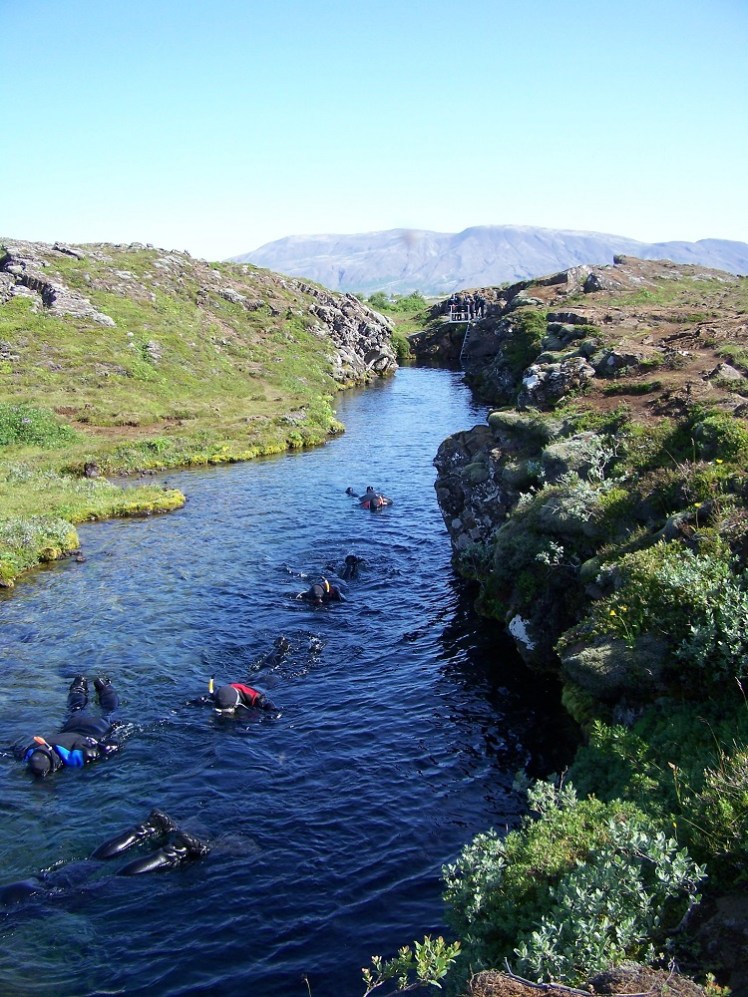
“Perishingly cold” is not the phrase I used when Monica was describing the fissures, by the way. I used a two-word alliterative phrase which called it “freezing”. It looks amazing – the water is crystal clear, bright blue and bright green, all at the same time, and the fissure is 40m deep. However, the steep sides of the fissure are not the edges of the two tectonic plates. Oh, sure. Silfra is indeed diving “between the continents” but the edge of the North American plate is that cliff behind the car park and the edge of the Eurasian plate is two or three kilometres away. Silfra is in a sort of tectonic no-mans-land, in the lava field that rose up to fill the gap as the two plates pulled apart.

Second, Into the Glacier. Stop taking Giles on these adventures, all he does is complain. We get it, cold and ice aren’t your idea of a good holiday. He does make a point about glaciers, climate change and the huge vehicles used to get up onto the ice, but if your idea of a glacier is smooth flat shiny ice, I’d better explain that a glacier is closer to frozen hell than a frozen stream. It’s not flat. It’s not smooth. It’s a mix of ice and whatever the glacier has eaten, which mostly means ground-up mountains. It contains holes hundreds of metres deep, great cracks can open up unexpectedly and there can be entire fields of what look like inverted overgrown icicles, like the stakes in certain traps that are now illegal.

You need a serious vehicle to drive on that. Given Iceland’s abundant cheap green electricity supplies and the fact they have to import all – literally all – fossil fuels, I’m surprised they’re not light years ahead of the rest of the world on electric vehicles. Fun fact: some of the glacier trucks are converted UN missile carriers. Iceland loves converting big things into glacier-going monster-trucks.
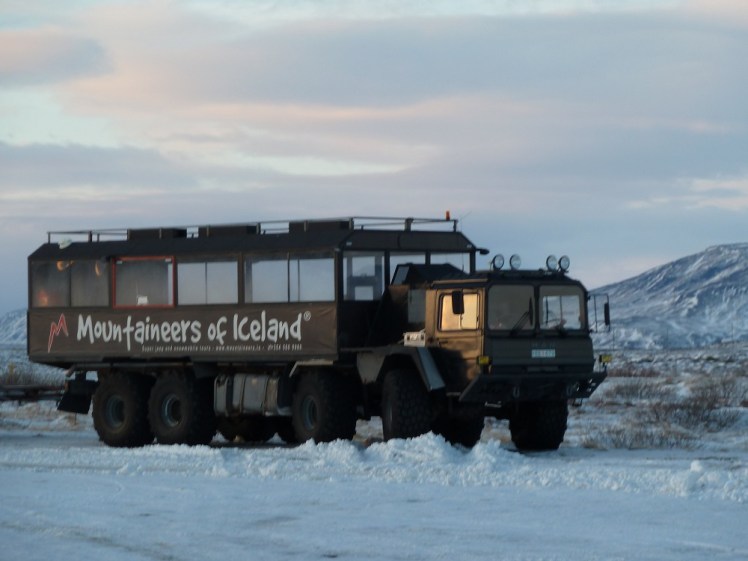
Near Langjökull is the grave of a glacier now lost to global warming. Iceland held a funeral for it – no, really. Its name was Okjökull, known more commonly as simply Ok. It would have fitted in really well for Giles to have paused there to really hammer his point home.
Giles also has a point about digging a tourist attraction on Langjökull but I suppose the volume of Into the Glacier compared to the entire glacier is absolutely nothing and the guide is right about the ice and snow not actually going anywhere. It may cause confusion when future glaciologists try to look at the layers but digging a big hole doesn’t actually shrink the glacer. This, by the way, is the glacier feeding Þingvallavatn – do this tour before the diving and know that you’re now swimming in the water you were walking on yesterday, with a little artistic licence. The surface ice won’t make it to the lake for quite a while.
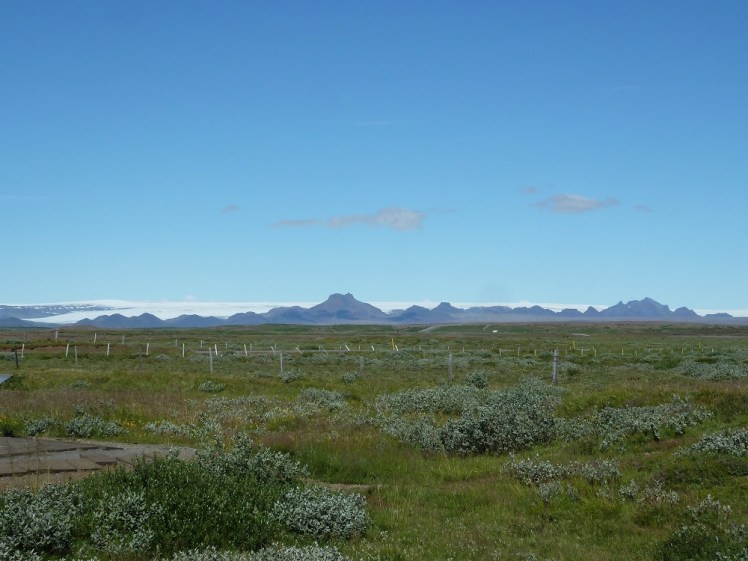
And finally, to the new eruption. That’s why I’m getting a spate of Iceland TV; anyone who can hold a camera has been sent over with a flimsy excuse to make a documentary it can be included in. These TV types never park or get bussed to the public car parks and have to walk an hour or two to the fresh lava. Alexander Armstrong took a helicopter and Giles & Monica are getting a lift in the ICE-SAR 4×4. Lucky them.
It’s a good reason to chat to Search and Rescue, though, and make the point that Icelandic nature isn’t quite as tame as you think. These volunteers – yes, ICE-SAR aren’t paid for this – aren’t describing volcano-induced injuries like burns or toxic gas inhalation, they’re describing broken limbs and falling over. They also rescue people who’ve got lost, people who get hypothermia and people who are too tired to make it back under their own steam. It may have become a tourist attraction but that doesn’t mean it’s easy or safe. Same goes for any outdoor activity in Iceland.

It’s a good volcano, though, isn’t it? I wish I could have seen it. Still, if one goes off every five years or so, there’ll be one I can watch eventually. Maybe Hekla would be fun. And this current one will still be hot and steaming for a long time.
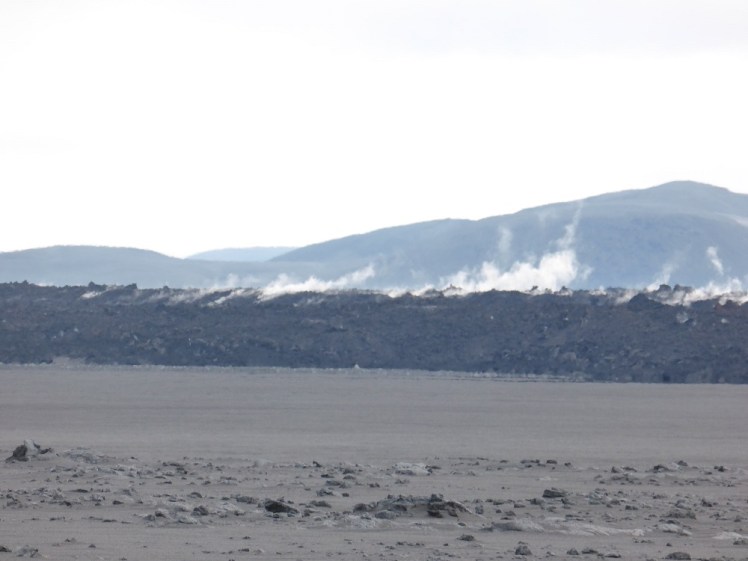
Adventures in Iceland can be expensive, as the show points out. On the whole, I’d rather stay in a hostel in Reykjavik and use tour companies. Or even better, hire a car and camp. It’s not for everyone but camping is by far the cheapest way to see Iceland and the money you can save on not staying somewhere like the ION Adventure Hotel you can put directly into more adventurous.
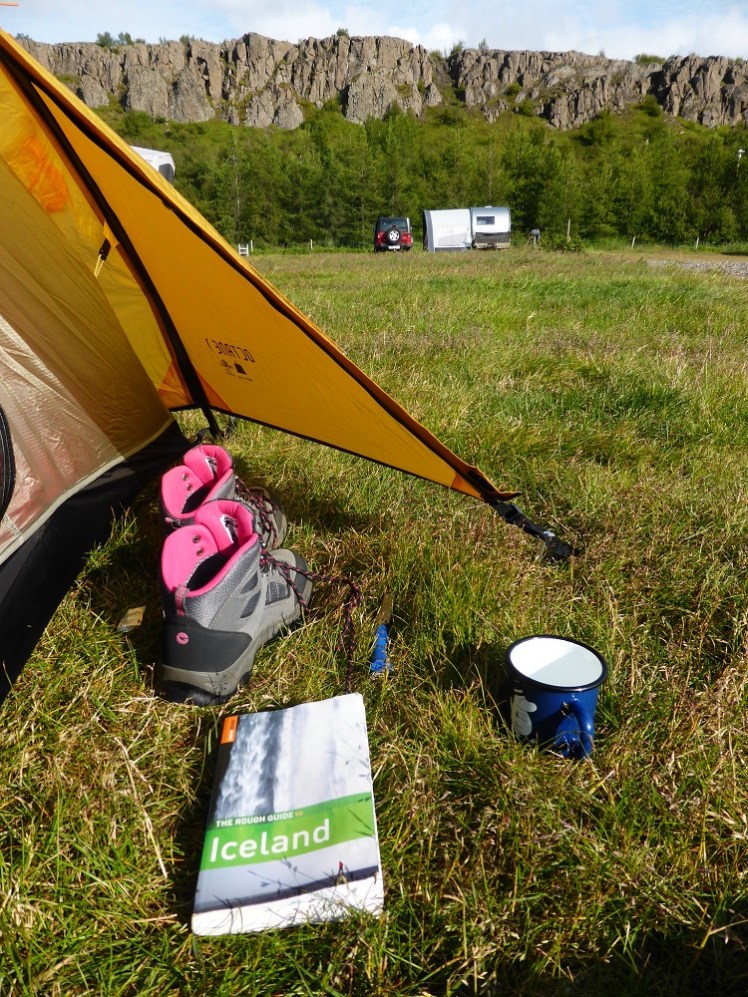
Am I ending a blog about a long BBC hotel advert with a recommendation not to stay there? Of course not. It’s just for budgetary reasons, I personally wouldn’t. I’m actually ending this blog with a little speculation.
I was researching the diving just the other day, when Alexander Armstrong’s Iceland series was on (blogs here: part one | parts two and three). That must have been filmed at a similar time to this – about three months after the eruption started, didn’t they both say? I wonder if they were there at the same time – after all, Alexander Armstrong and Giles Coren are related, in that their wives are sisters. Should I be expecting David Mitchell in Iceland next? After all, he’s the next famous man in this chain, being married to Giles Coren’s sister.